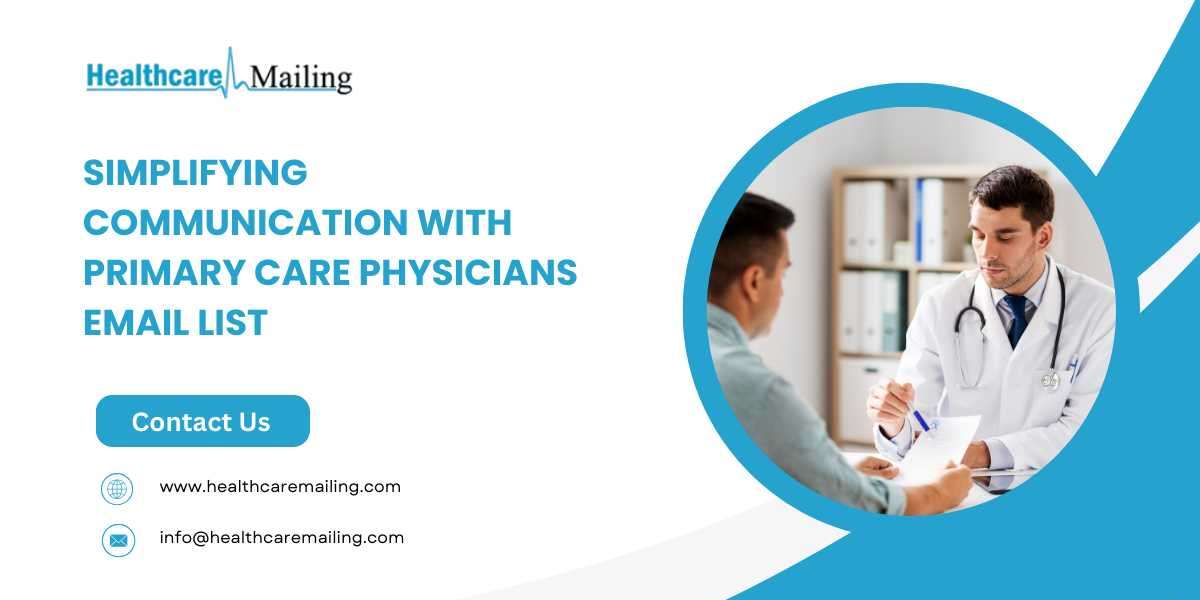Introduction to the Email List for Primary Care Physicians
In the fast-paced world of healthcare, efficient communication with primary care physicians is crucial. An email list dedicated to primary care physicians enables healthcare organizations to maintain direct and effective contact with these key providers. With such a list, pharmaceutical companies, medical marketers, and other stakeholders can share important updates, research findings, and professional development opportunities seamlessly. This targeted approach not only strengthens professional relationships but also ensures that essential information reaches the right audience promptly. By leveraging a specialized email list, healthcare entities can enhance the flow of communication, ultimately benefiting patient care.
Advantages of Utilizing an Email List
Leveraging a Primary Care Physicians Email List offers numerous advantages. Having direct access to physicians' inboxes allows organizations to efficiently share important announcements, updates, and invitations. This swift exchange of information can enhance patient care by keeping physicians informed about the latest medical advancements and treatment options. Additionally, using an email list cuts down on the time and resources spent on traditional communication methods, allowing healthcare providers to focus more on their patients. Email lists also provide a targeted way to reach physicians, ensuring that messages are relevant and tailored to their interests and needs.
Strategies for Creating an Effective Email List
Gathering an effective Primary Care Physicians Mailing List requires thoughtful methods. Start by collecting email addresses at professional gatherings like conferences and webinars. Offering valuable incentives such as exclusive content or educational resources can motivate physicians to subscribe. It's imperative to respect privacy and follow regulations like HIPAA when handling email data. This not only ensures compliance but also builds trust among recipients. Regularly updating and verifying the list will improve its accuracy and reliability. Employing these strategies will help in creating a robust and effective email list that serves the communication needs of healthcare organizations.
Enhancing Email Communication
Crafting effective emails for primary care physicians involves several key strategies. Start with engaging and clear subject lines to capture attention without being deceptive. The content of the email should be concise and to the point, highlighting the main message right away. Offering the option to read more can cater to those interested in additional details. Personalization is crucial; address physicians by their names and consider their specific interests or needs. Use analytics to determine the best times to send emails, ensuring higher open rates and engagement. Avoid bombarding recipients with too many messages by maintaining a balanced frequency. Integrating feedback mechanisms within the emails can provide valuable insights for continuous improvement.
Tackling Common Obstacles
While email lists offer numerous benefits, they also come with challenges. One common concern is the risk of emails being marked as spam. To mitigate this, ensure that all recipients have opted in to receive communications and provide an easy option to unsubscribe. Privacy is another significant concern, especially when dealing with personal information. Adhering to regulations and implementing strong data protection measures can alleviate these worries. To ensure high engagement rates, it's important to analyze email performance regularly and adjust strategies based on what resonates best with the audience.
Future Trends in Healthcare Communication
Emerging technologies are transforming the way healthcare communication is conducted, with a particular focus on email interactions. Artificial intelligence (AI) and machine learning are starting to play a crucial role in enhancing the personalization and targeting of emails. These technologies can analyze vast amounts of data to determine what type of content resonates most with primary care physicians, enabling more effective and tailored communication.
Predictive analytics, another advancement, can forecast the best times to send emails for higher engagement rates. This means healthcare organizations can schedule their communications when physicians are most likely to read and respond, improving overall interaction rates.
Voice technology is also on the rise, allowing emails to be integrated with voice assistants. This makes it easier for busy physicians to listen to important updates without needing to read through lengthy emails.
Blockchain technology offers potential benefits for data security and privacy, ensuring that sensitive information shared via email is safeguarded against breaches.
Furthermore, the integration of email platforms with other digital tools and platforms, such as electronic health records (EHRs) and customer relationship management (CRM) systems, is becoming more seamless. This interconnected approach can streamline workflows and make it easier to track communication metrics, helping organizations to refine their strategies continually.
Finally, augmented reality (AR) and virtual reality (VR) technologies, while still in their early stages, show promise for future email communications. Imagine a scenario where a physician receives an email with an AR component that allows them to visualize new medical equipment or procedures in a 3D space. This could add a layer of interactivity and engagement that traditional emails lack.
These technological advancements suggest a future where email communication in healthcare is more dynamic, secure, and personalized.
Conclusion
The strategic use of a Primary Care Physicians Email List has the potential to revolutionize communication within the healthcare sector. By providing a direct line to primary care physicians, these lists ensure that crucial updates, research findings, and professional development opportunities are communicated effectively. This targeted communication method saves both time and resources, allowing healthcare providers to focus more on patient care.
Collecting and maintaining a high-quality email list involves thoughtful strategies such as gathering addresses at professional events, offering incentives for subscription, and respecting privacy regulations. By adhering to these practices, organizations can build trust and enhance the reliability of their communication efforts.
Moreover, as technology advances, integrating tools like artificial intelligence, predictive analytics, and voice technology can further optimize email communication, making it more personalized and secure. These innovations hold promise for making interactions more dynamic and engaging, ultimately fostering a more connected and efficient healthcare community.
Overall, an effective Primary Care Physicians Email List not only strengthens professional relationships but also contributes to improved patient care by ensuring timely and relevant information reaches the right individuals. Embracing these strategies and technological advancements can significantly elevate the impact of email communication in the healthcare industry.













